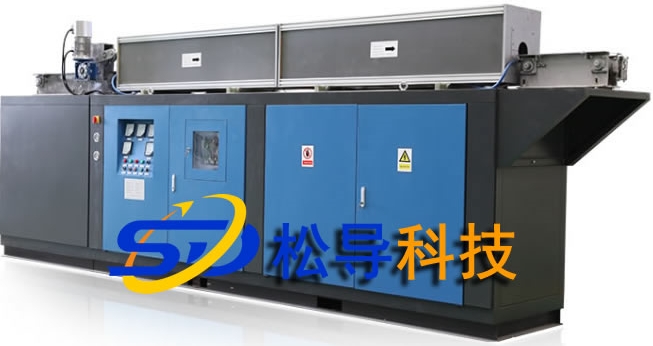- 27
- Mar
ສິ່ງທີ່ຄວາມລົ້ມເຫລວແມ່ນມັກຈະເກີດຂຶ້ນໃນເຕົາອົບຄວາມຮ້ອນ induction ສໍາລັບ forging
ສິ່ງທີ່ຄວາມລົ້ມເຫລວແມ່ນມັກຈະເກີດຂຶ້ນໃນເຕົາອົບຄວາມຮ້ອນ induction ສໍາລັບ forging
1 The induction heating furnace for forging is operating normally, but near a certain point in the high voltage zone, the induction heating furnace for forging is unstable, the DC voltmeter is shaking, and the induction heating furnace for forging is accompanied by a squeaking sound
ເຫດຜົນ: ຊິ້ນສ່ວນໄຟໄຫມ້ພາຍໃຕ້ຄວາມກົດດັນສູງ.
2. The induction heating furnace for forging operates normally, but from time to time a sharp beep and beep sound can be heard, and the DC voltmeter swings slightly.
Reason: Poor insulation between transformer turns.
3. The induction heating furnace for forging works normally, but the power cannot be increased
Reason: The power does not go up, indicating that the parameters of the induction heating furnace for forging are not adjusted properly.
4. ເຕົາຄວາມຮ້ອນ induction ສໍາລັບ forging ແມ່ນເຮັດວຽກເປັນປົກກະຕິ, ແຕ່ໃນເວລາທີ່ພະລັງງານໄດ້ຖືກຍົກຂຶ້ນຫຼືຫຼຸດລົງໃນພາກສ່ວນພະລັງງານສະເພາະໃດຫນຶ່ງ, ເຕົາອົບຄວາມຮ້ອນ induction ສໍາລັບ forging ມີສຽງຜິດປົກກະຕິແລະ jitter, ແລະເຄື່ອງມືໄຟຟ້າຊີ້ໃຫ້ເຫັນ swing.
ເຫດຜົນ: ປະເພດຂອງຄວາມລົ້ມເຫຼວນີ້ມັກຈະເກີດຂຶ້ນກັບ potentiometer ພະລັງງານໃຫ້. A ພາກສ່ວນສະເພາະໃດຫນຶ່ງຂອງ potentiometer ພະລັງງານໃຫ້ແມ່ນບໍ່ກ້ຽງແລະກະໂດດ, ຊຶ່ງເຮັດໃຫ້ເກີດຄວາມບໍ່ສະຖຽນລະພາບຂອງ furnace ຄວາມຮ້ອນ induction ສໍາລັບການ forging. ໃນກໍລະນີຮ້າຍແຮງ, inverter ຈະຖືກ overturned ແລະ thyristor ຈະຖືກໄຟໄຫມ້.
5. ເຕົາອົບຄວາມຮ້ອນ induction ສໍາລັບ forging ແມ່ນເຮັດວຽກເປັນປົກກະຕິ, ແຕ່ເຄື່ອງປະຕິກອນ bypass ຄວາມຮ້ອນແລະໄຟໄຫມ້.
Reason: There is asymmetrical operation of the inverter circuit. The main reason for the asymmetrical operation of the inverter circuit comes from the signal circuit; the quality of the bypass reactor itself is not good.
6. The induction heating furnace for forging is operating normally and often breaks down the compensation capacitor
Reasons: poor cooling, capacitor breakdown; insufficient capacitor configuration; medium frequency voltage and operating frequency are too high; in the capacitor boost circuit, the capacitance difference between series capacitors and parallel capacitors is too large, resulting in uneven voltage and capacitor breakdown.

